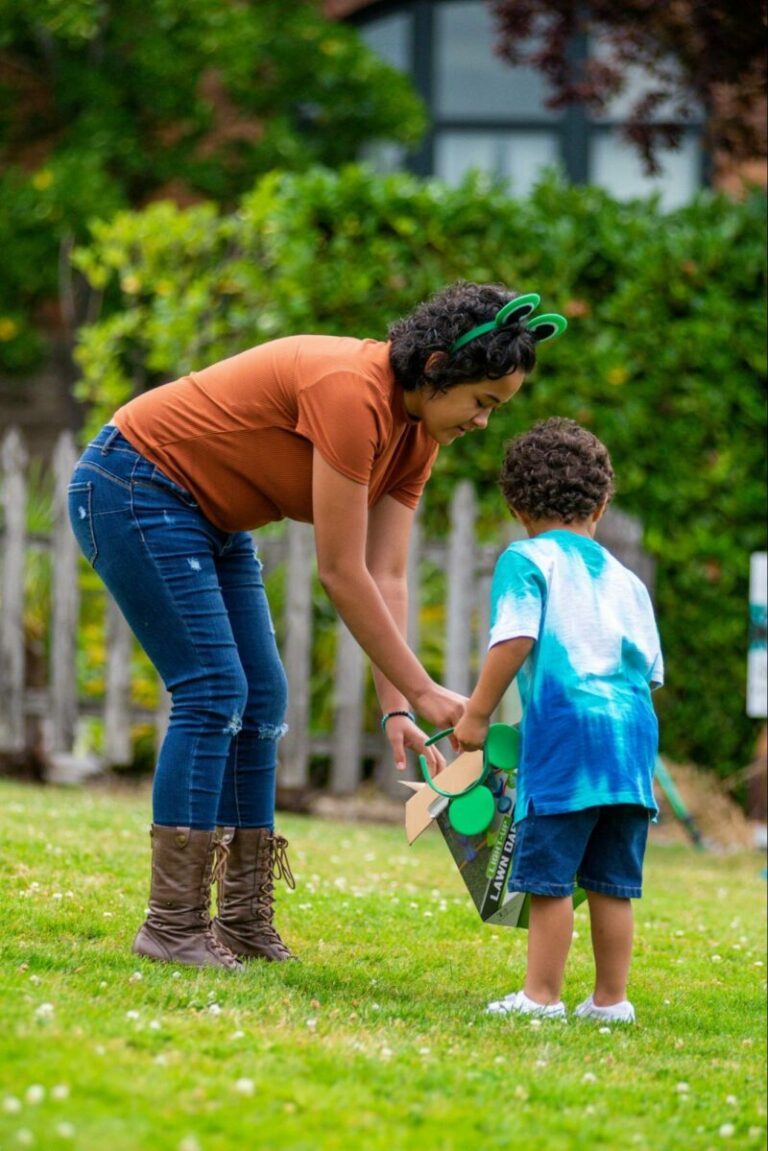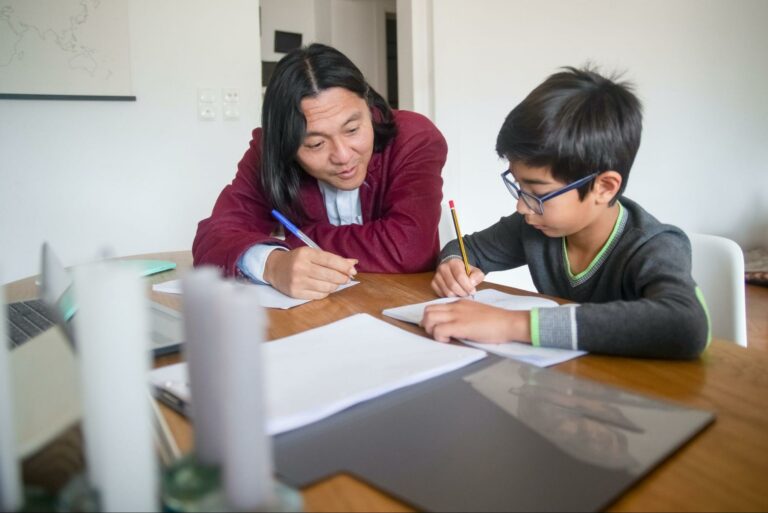
Have you ever attempted to sit down and wrap a gift at a messy dinner table? Perhaps you have some unopened letters on there, or some birthday party invites that need to go up on the fridge. A small person might have spilled some water, or condiments are leftover from last night’s dinner. It is the space you need to use, so do you sit down and roll out the wrapping, trying to avoid it getting wet or crushed from the lack of space? Or do you tidy up and clean everything away so that you can extend as much of the patterned paper and sticky tape as you need?
Having a space that is physically or mentally chaotic is not conducive to positive outcomes.
Research[1] suggests that the environment plays a large part in brain development. The child is very much engaged with it and so anything that takes place there will influence them. Happy, calm environments make for happy, calm learning spaces.
“Research on deprivation can be used to make the case that environments that adversely affect infants and young children need to be remedied before they have long-lasting consequences on both brain and behavior.”
First and foremost, children need to feel safe and secure to be active learners. So how can you create a positive learning environment?

The Basics
Maslow’s Hierarchy of Needs states that every person’s basic needs are food, shelter, and a clean and fresh environment. Having a good night’s sleep and waking up to a wholesome breakfast is a great way to have a good learning day.
Meeting their emotional needs
- Consider fidget toys to keep them focused and on task.
- Do they have their own designated space to work?
- Are you happy and in a positive frame of mind to deliver and support their home learning?
Consider the level of structure you will have while homeschooling. It can be as simple as writing a list of goals to achieve, or a more detailed description of what will happen at set times. You may settle on somewhere in between.
“Nurturing care for the mind is critical for brain growth. Children grow and learn best in a safe environment where they are protected from neglect and from extreme or chronic stress, with plenty of opportunities to play and explore[2].”
KneoWorld’s unique approach of harnessing the power of the narrative to integrate social and emotional learning, along with literacy and math instruction in an engaging and compelling format, empowers students to develop innovative thinking skills and a lifelong love for learning.
Educational Resources
Access to literature is important for cognitive, comprehension, and emotional development. Story-based learning is a highly effective, time-tested method for learning, so ensure you have age and stage-appropriate books readily available to refer to and enjoy. You may also want to consider visits to the library, bookstore cafes, and museums.
Include a variety of physical resources in your tool kit, such as toys and construction materials to support your teaching. Online and digital programs are equally as important to have on hand as they offer an alternative means of engaging your child. Lessons provided by KneoWorld are designed to get your child up and moving around as well as working collaboratively to practice key skills.

Learning through play
Homeschooling should not be about sitting still at the table and learning. Offering opportunities to experience the world through playing has great outcomes and is a widely understood element of education.
Throughout the day, you want your child to experience the world in different ways. This is great, not only for brain development but as a means for teaching since children learn in different ways. Embed the following senses into your routines,
- Touch
- Taste
- Smell
- Sight
- Hearing
- Vestibular (balance)
- Proprioception (body awareness)
Take time to incorporate their senses. Set up role-play activities, games, puzzles, and creativity to teach various educational concepts; or make a visit to the local park, play centers, or bike tracks. Consider having designated art and craft areas, a quiet/downtime space, and sensory, sand water play activities also available.
Being Present and Promoting Independence
Homeschooling requires a considerable level of commitment. You must be present and available for your child and what they need. Extend that independence by providing opportunities to have meaningful experiences, not for experiences’ sake, but with purpose. Intentional activities include watering plants and composting, laundry, and grocery shopping.

Be mindful not to complete tasks for them, but rather empower them to work through them. Allowing them to make mistakes in a safe environment, knowing that you will be there to support them, builds upon and scaffolds their existing knowledge. KneoWorld supports this via their stories and activities model which offers strategies for dealing with both achievements and setbacks.
Valuing Children’s Work
Appreciating your child’s efforts goes a long way to forming a healthy and positive learning environment. It raises their self-esteem and extends their brain development. Growth mindset is a key component of the KneoWorld program and research shows that successful learning outcomes are achieved when children have a positive mindset.
Read more about how KneoWorld can be a feature of your homeschooling experience here

